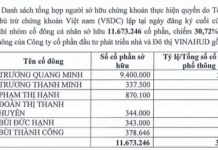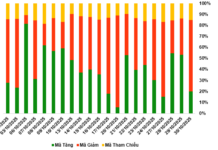According to information from the Vietnam Association of Seafood Exporters and Producers (VASEP), in the first two months of 2024, Vietnam’s seafood exports increased by 13% compared to the same period last year. Many main products have shown positive growth in the past 2 months, in which white-leg shrimp increased by 18%, tuna increased by 21%, catfish increased by 6.5%, and tiger shrimp increased by 9%. Particularly, the export of lobster has skyrocketed 18 times compared to the same period last year.
By the end of February 2024, lobster exports reached nearly 30 million USD, an increase of 1,746% compared to the 1.6 million USD in the same period last year. Of which, green lobster exports (rock lobster) accounted for over 90% with 27.6 million USD, an increase of 80 times, followed by spiny lobster with 2.15 million USD, an increase of 45 times compared to the same period.
China is still the largest import market for Vietnam’s lobster products, with a value of nearly 29 million USD, 27 times higher than the same period last year. Currently, Vietnam has 46 packaging facilities exporting lobster to this market.
However, since October 2023, China has stopped importing Vietnamese spiny lobster due to regulations related to its Wildlife Protection Law.
Accordingly, to export bamboo spiny lobster to China, businesses must demonstrate that the seedlings are not directly caught from the sea, provide clear evidence of the breeding process, and not use seedlings exploited from nature; the importing unit must have a permit…

In addition to China, Vietnam also exports green spiny lobster and bamboo spiny lobster to Thailand, Malaysia, and Singapore, and land spiny lobster to the US.
Spiny lobster is a high-value species, bringing in high income for people in the South Central provinces, especially Khanh Hoa and Phu Yen provinces. Khanh Hoa is the largest breeding and exporting area for spiny lobster in the country. Currently, this locality has built 3 linkages between farmers and legally recognized enterprises for the export of spiny lobster.
On the domestic market, the price of size 0.9 – 2.5kg bamboo spiny lobster ranges from 1.9 to 3.3 million VND/kg.
In 2023, Indonesia, Thailand, and Vietnam accounted for about 6.8% of China’s spiny lobster import market share, doubling from 2019. In addition to the impact of the ban on seafood imports from Japan, this increase also comes from China’s closer ties with neighboring Southeast Asian countries to reduce the impact of political tensions with the West.
China is also seeking solutions to domestically breed various types of spiny lobster to meet domestic demand. Since 2019, the country has started breeding bamboo spiny lobster – a type from Australia – in the autonomous region of Xinjiang, with the construction of breeding ponds with a seawater-like environment. Eastern European spiny lobster breeds in Xinjiang have also been transferred to Zhejiang and Jiangsu for reproduction.





































